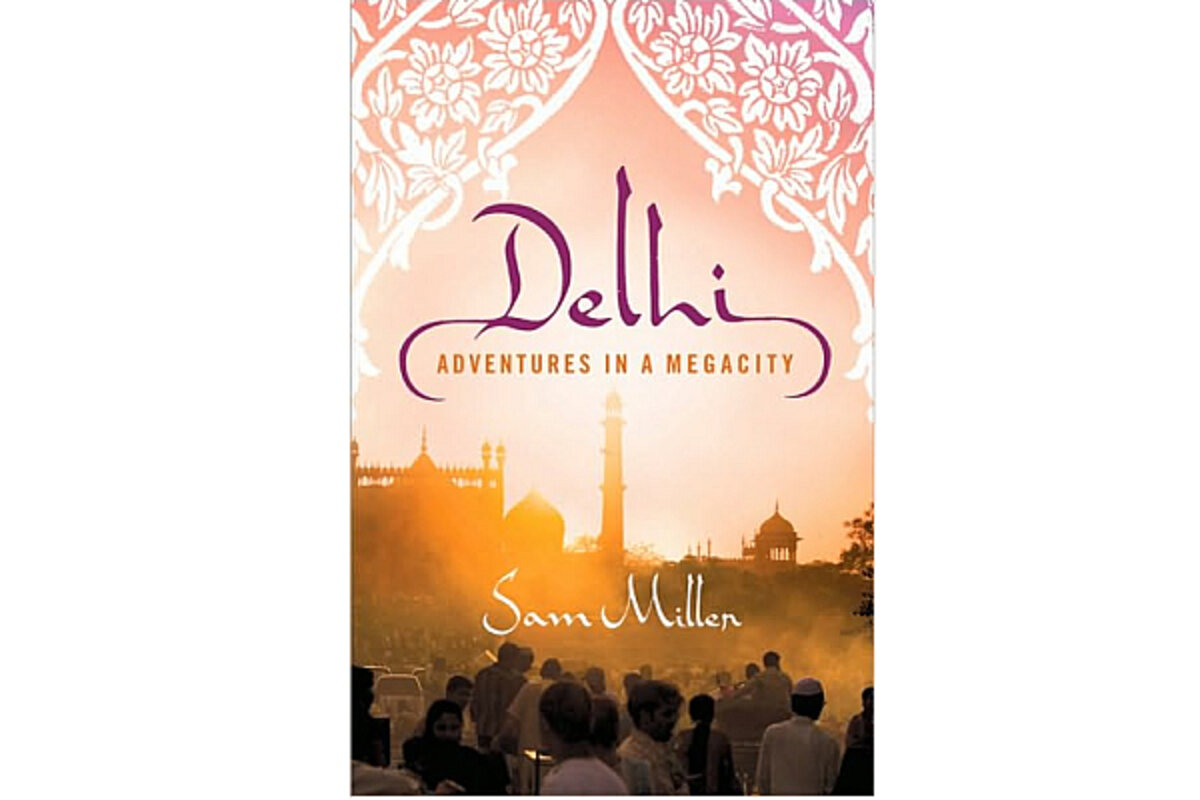Delhi: Adventures in a Megacity
Loading...
Delhi is a booming megalopolis of some 20 million people, and according to BBC journalist and Delhi resident Sam Miller, it’s often a bizarre blending of past and future, East and West, rich and poor. Miller walks around Delhi in a spiral that takes him into streets that are little changed since the 16th century; yet Delhi is also a city of the future, “sprawling beyond its own borders, swallowing up villages and farmland, sucking in migrants, spewing out pollution.... From all over India, they flock to Delhi. They want jobs and a brighter future for their children,” writes Miller in his loosely spun, multifaceted travelogue Delhi: Adventures in a Megacity.
Miller’s wife is Indian and comes from Bombay, a city Miller initially found much more congenial than Delhi. In fact, Miller’s early encounters with the mega-city he now calls home proved frustrating. “Only now am I beginning to come to terms with that vacillating attraction and repulsion I feel for this monstrous, addictive city.”
Miller is a foreigner and, despite his erratic attempts to speak Hindi, he runs into many confusing situations. “Delhi,” Miller writes, “is not an easy city to walk in. Its occasional and irregular pavements contain hidden hazards.... Walking in Delhi – especially if you’re large and whitish, and clearly above the poverty line – can make you an object of disbelief and ridicule.”
The structure of this book is simple. Miller visits places that catch his interest, engaging Delhi residents in conversation about the city. He repeatedly gets himself into strange places and weird situations, giving “Delhi” a decidedly episodic feel, along with a narrative line almost as sprawling as the city itself.
He walks into a massive Delhi railroad station and catalogs its chaos: “Bare light-bulbs of low wattage. A human of indeterminate gender, covered in sackcloth, asleep on the tiled floor. A pigeon with its head inside a crisp packet. A railway official strutting past, stiff with self-importance. Bedraggled children.”
Or, sitting on a tree stump on the edge of a traffic-choked road to rest his aching knees, Miller finds himself (not for the last time) under attack: “[M]y leg was itchy. I jumped up. An entire cohort of ants was ascending my right leg ... I danced about, spinning around like a dervish.” A local Hindi looks at the ant-infested Miller as if he’s crazy. Miller next wanders into an open-air slaughterhouse that hasn’t changed in centuries. “I saw one man in the near-distance using his knife to point me out to his friend,” he writes, “I waved cheerily at them. They glared back at me with frozen eyes.” One man grabs Miller’s camera, and later, another brandishes his knife at Miller, who soon flees the hostile place.
Signs of India’s economic boom are omnipresent. Miller visits an English school that’s doing great business, as Indians rush to develop the language skills needed to find good jobs at multinational companies. “The key role of English,” Miller writes, “is to get a good white-collar job, and to raise your social status. Hindi and other languages are for films, family, friends, and, if you are rich and Anglophone, to give orders to your servants.” Miller walks into a Western-style shopping mall that’s heavily air-conditioned and possesses a mind-numbing blandness. It’s “a huge enclosed courtyard ringed by five layers of shops, linked by escalators, with a low hum of muzak, and the smell of cheap cleaning fluid. I could be almost anywhere.”
Miller makes it clear that, despite India’s reputation as a spiritual place, materialism is running rampant in booming Delhi. Miller chalks it up to globalization: “Delhi is a city on the make. The wealthy fear only the taxman. There is no shame in acquisitiveness; and no vulgarity in broadcasting the cost of acquisition.” Miller pokes lighthearted fun at the Westerners who make pilgrimages to “spiritual” India only to find locals who would love nothing more than to live Western-style lives of aggressive consumerism.
Miller concludes his journey at Delhi’s burgeoning garbage dump, where hundreds of ragpickers have built homes. He finds himself again in peril from the local wildlife: “[T]wo pigs kept coming toward me ... I picked up my speed. And so did they. I had never realized that pigs could run so fast.” The chase ends when Miller jumps over a wall. What Miller learns at the dump is how desperate Indians are to live in Delhi: “[N]ew migrants would rather live on the banks of an open sewer in a big booming city than return to the poverty of their more picturesque homes elsewhere in India.”
Delhi will doubtless continue to grow, but Miller wonders whether the city can handle it. If his book is any indication, Delhi has done badly planning for the growth it’s already experienced, let alone future growth. Miller’s travelogue puts all Delhi’s bizarre charm and extremes on full display, and it will surely resonate with travelers, or anyone wanting a glimpse of one of the world’s fastest growing metropolises.
Chuck Leddy is a Boston-based book critic.





